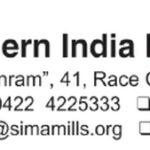Union Budget Recognizes Core Strengths of Textiles Sector with Human Emphasis: Santosh Kumar Gangwar
The Minister of State for Textiles (Independent Charge), Parliamentary Affairs, Water Resources, River Development and Ganga Rejuvenation, Shri Santosh Kumar Gangwar, applauding the Union Budget 2014-15 said that “this is a forward-looking Budget for all including the textile industry.” He further added that “the Budget recognizes the aspirations of a new India which is looking towards the government for decisively moving towards high growth, low inflation and more jobs.” This Budget, said Shri Gangwar, “aims for a 7 per cent or higher growth rate in a sustained manner within the next few years and will also usher in macro-economic stability in the near future.”
Shri Gangwar welcomed the proposals for the textile sectors which include setting-up of mega textile clusters at Varanasi, Bareilly, Lucknow, Surat, Kuttch, Bhagalpur, Mysore and one in Tamil Nadu with a sum of Rs. 200 crore. The Finance Minister also announced a Trade Facilitation Centre and a Crafts Museum with an outlay of Rs. 50 crore to develop and promote handloom products and carry forward the rich tradition of handlooms of Varanasi. A Hastkala Academy for the preservation, revival, and documentation of the handloom/handicraft sector in PPP mode in Delhi, with an outlay of Rs. 30 crore was also announced. A Pashmina Promotion Programme (P-3) and a programme for the development of other crafts of Jammu & Kashmir also figured in the Union Budget, for which a sum of Rs.50 crore is set aside.
“The Budget recognizes the core strengths of the textiles sector and aims to promote them with a strong human emphasis”, said Shri Gangwar.
To encourage exports of readymade garments, the Finance Minister has proposed to increase the duty free entitlement for import of trimmings, embellishments and other specified items from 3 percent to 5 percent of the value of their exports. Apart from it, faster clearance of import and export cargo will also be implemented to reduce transaction costs and improves business competitiveness.
The Textile industry, which plays a pivotal role in the economic life of India, also majorly contributes to industrial output, employment generation and the export earnings of the country. It contributes about 14% to the industrial production, 4% to the GDP and 11% to the country’s export earnings. The textile sector is the second largest provider of employment after agriculture.






